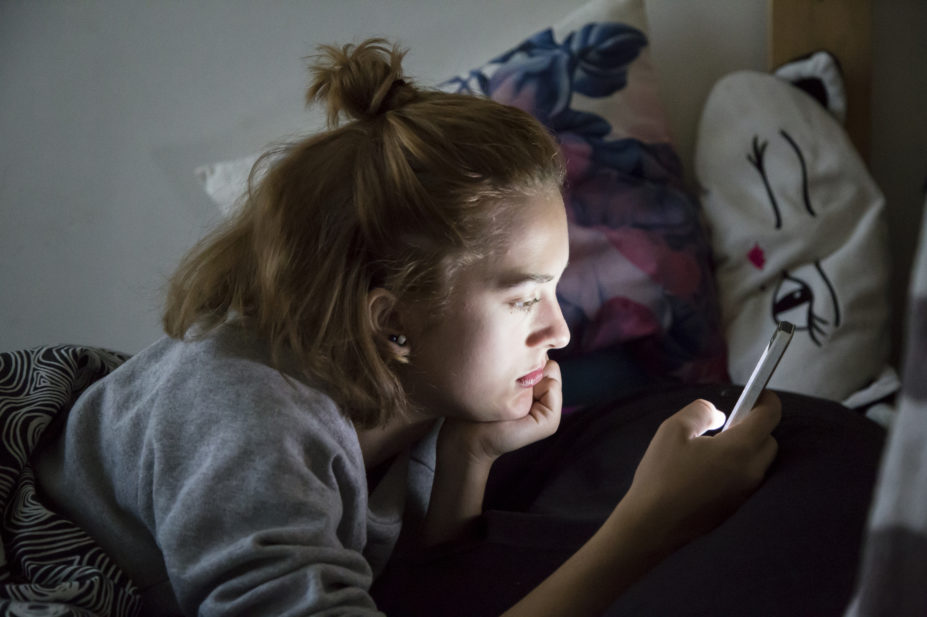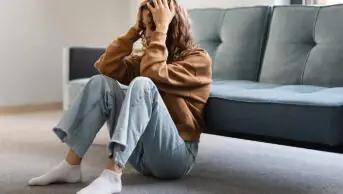
Shutterstock.com
Children and young people with symptoms of mild to moderate anxiety could be offered digital cognitive behavioural therapy (CBT) to manage their symptoms, if recommendations made by the National Institute for Health and Care Excellence (NICE) are accepted.
Under the conditional recommendations, released for consultation on 4 November 2022, five technologies have been put forward as potential first-line treatment options for mild to moderate anxiety in young people, or for use alongside other treatments, while further evidence is generated.
The technologies offer games, videos and quizzes, which are based on CBT principles, to help children and young people learn techniques to better understand and manage symptoms of anxiety and low mood with the support of a mental health practitioner. Access to the technologies is available remotely, via mobile phone, tablet or computer; formats that are thought to be appealing to this age group.
The online and mobile technologies are part of a NICE pilot for early value assessment (EVA) of medical technologies, which aims to identify the most promising technologies in health and social care, where there is an unmet need.
Currently, NICE recommends talking therapies as the first treatment for depression and anxiety in children and teenagers, but waiting lists are often very long.
It is expected that users would also be offered other support, such as face-to-face CBT, alongside the digital therapies, where appropriate.
“There is an increased need for child and young people’s mental health services that has become even greater due to the COVID-19 pandemic,” said Mark Chapman, interim director of medical technology at NICE.
“Technologies like these could help children and young people get wider access to support.”
He said that the technologies would not replace face-to-face intervention but would bring together digital interventions with clinical support.
“By driving innovations like these into the hands of clinicians, we can improve care for patients and help the service recover following the pandemic,” he added.
Beryl Navti, an advanced mental health pharmacist at North East London NHS Foundation Trust, said that in the earlier part of the COVID-19 pandemic, the number of children and young people with anxiety rose from an estimated 13% to 24%, and by January 2021, this estimate stood at 27%.
“This has resulted in huge pressures on child and adolescent mental health services, with many children unable to access the help they need,” she said.
“It stands to reason that healthcare authorities would want to explore innovative ways to address both the increase in demand and shortage of available healthcare professionals, to offer much needed interventions to these young people.”
Navti said that while a digital approach would be welcome as a way to improve access to psychological therapies and reduce the number of missed appointments, they should be approached “with caution”.
“Some studies have shown that digital technologies can also expose children and young people to some serious social, intellectual and mental health risks, and therefore could be considered a double-edged sword,” she explained.
“In making these conditional recommendations, it is my understanding that NICE would be gathering detailed evidence whilst they are in use, and it is reassuring that they will be supported by qualified mental health professionals.
“It is important for guidance to be clear about issues such as selection of suitable young people for various digital interventions, the impact of such interventions on children who already feel isolated on the back of the various lockdowns, and how to manage concerns about safety for children whose anxiety arises from living in households where they are at risk from domestic violence, etc.”
Research carried out by the National Institute for Health and Care Research has found that the number of young people aged 12-17-years who are prescribed antidepressants more than doubled between 2005 and 2017.
Furthermore, it found that only one in four of the teenagers had visited a child and adolescent psychiatrist; one in six had visited a general specialist children’s doctor; and one in 25 had attended adult mental health services.
Just over half of the prescriptions were for depression (53%), followed by anxiety (16%). The most commonly prescribed selective serotonin reuptake inhibitor was fluoxetine, followed by sertraline and citalopram.


